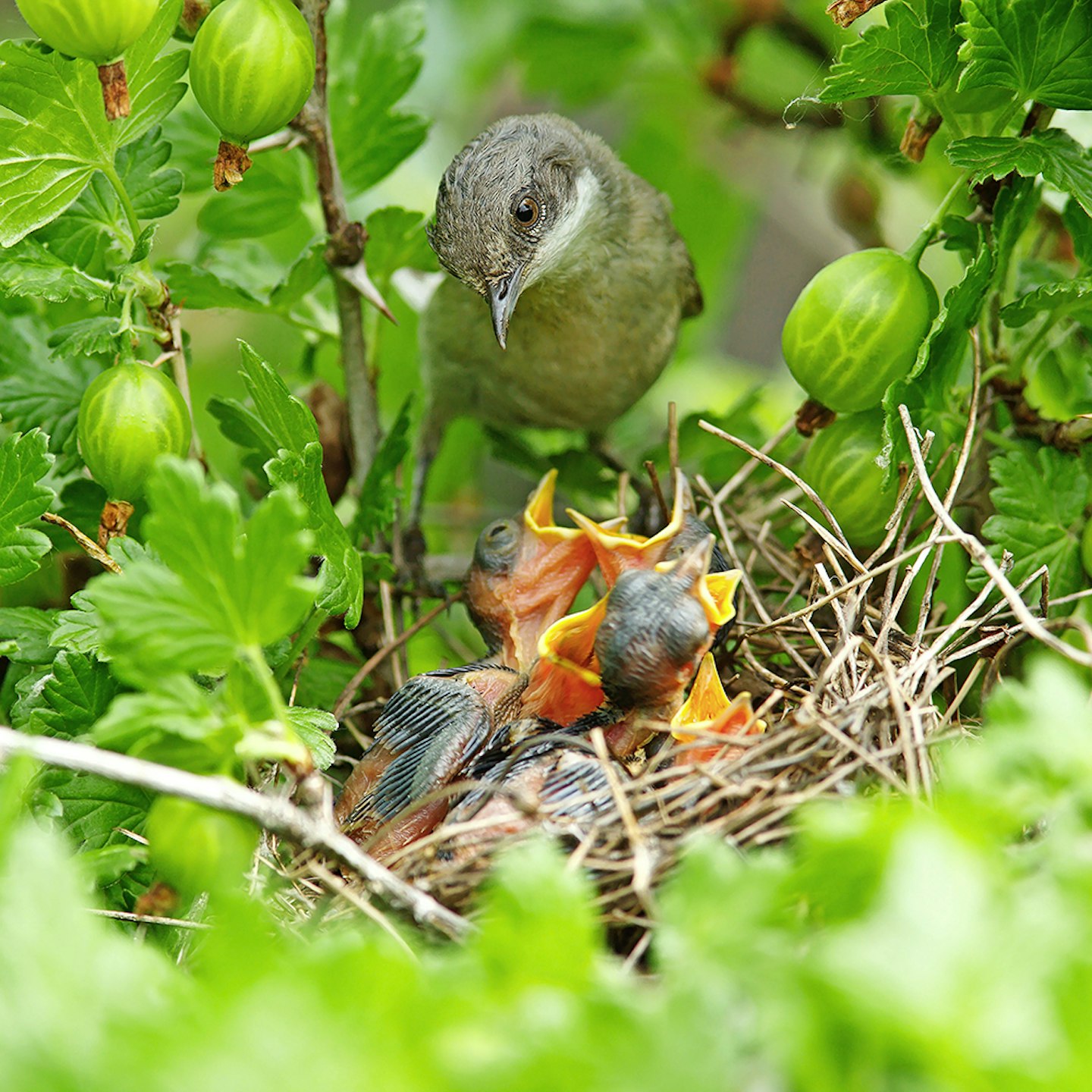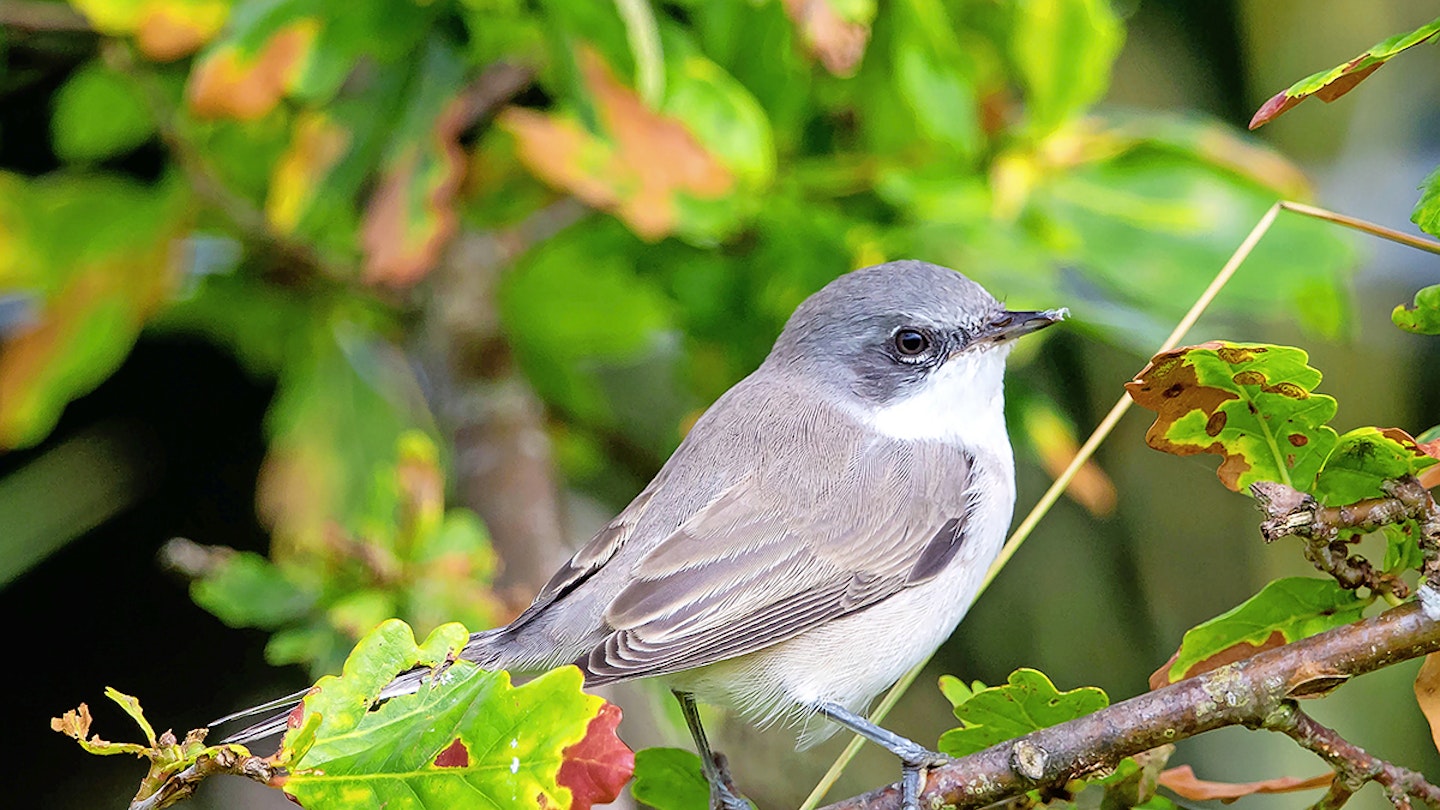There’s much to dislike about the Lesser Whitethroat’s habit of social distancing – but let’s be pleased that they are here at all
Scientific name: Sylvia curruca
Length: 13cm
Wingspan: 18cm
UK numbers: 74,000 breeding territories
Habitat: Scrub and hedges
Diet: Insects in summer, berries in autumn
It seems a little harsh to open an article about a bird by describing it as annoying, but if you try to find a Lesser Whitethroat, especially in springtime, you will quickly reach the same conclusion – it is annoying.
The Lesser Whitethroat is also _ and this is quite unrelated – probably Michel Barnier’s favourite bird. You will find out why below. But let’s be honest. Looking for this enigmatic scrubby warbler is like pulling teeth, and it’s all because of a curious behavioural quirk.
The song is super-distinctive, an oddly mechanical trill, so that’s great, and soon, to your delight, you can hear one. Your torture is just beginning.
You walk over to the bush where the Lesser Whitethroat has been performing and – yes! – there it is again. And then silence; nothing. Everything else is singing its heart out, other birds are bristling with proclamation, but your mystery ‘triller’ has vanished. And then, just as you sigh and give up, there is it again – from 50 metres away.
You walk the distance, approaching in silence, breathless with anticipation. It stops. Then, from a bush still further away, the disembodied voice, now loud and clear, taunts you. It’s horrible.
There’s another skulker that follows this pattern, the Cetti’s Warbler. It will sing, then move unseen and sing again. But at least the Cetti’s has the excuse of being bigamous, so it is at least covering the ground occupied by two females. But Lesser Whitethroats are monogamous.
So, they are just annoying. Of course, if you do eventually set eyes on one, you can perhaps appreciate this non-conformist warbler for the attractive and distinctive bird that it is. Not as similar to the (Common) Whitethroat as it looks in books and on apps, it is a deep-cleaned version, shinier and smarter.
Curious differences
The sexes are essentially identical to look at, which is also different from Whitethroat. It is markedly more skulking. While the Whitethroat forages in shrubbery, that bird simply cannot resist the sunshine when it comes to singing and will adorn bush-tops and even overhead wires when excited. It also sings in flight which (except very rarely), the Lesser Whitethroat just doesn’t do. Even at the height of its song-rate, in the week that the female lays the eggs, it doesn’t like heights.
There is another curious difference between the two species in their singing output, and that’s in their bedtime habits. The Whitethroat is an early to bed bird, but is then something of a slouch, not joining the dawn chorus (at least in my experience) until most birds have already got dressed, breakfasted and have reached for their smartphones.
The Lesser Whitethroat, on the other hand, typically starts singing when it is still dark, right at the beginning of the chorus, when only Robins and Blackbirds are vocalising; and I have also heard it in the dusk gloaming. Presumably, this is related to the fact that Lesser Whitethroats are typically found in taller, darker scrub and more often forage in low light. I cannot find out whether Lessers have relatively larger eyes than do Whitethroats (there isn’t much call for this information), but it’s a reasonable assumption.
However, there is a twist to this, and this leads us to Michel Barnier. When we look at the Lesser Whitethroat, we find that this bird has a similar relationship to the UK as that of the estimable EU Chief Brexit negotiator, namely that the UK is a small part of Monsieur Barnier’s ‘range’, and an even smaller part of the Lesser Whitethroat’s range.

Lowland breeding
Our country is peripheral, on the edge of a much larger whole, which extends east to central Asia and beyond. The federal Lesser Whitethroat is more significant than the peripheral one and has a broader reach in many directions. For example, the British Lesser Whitethroat, which is largely confinedto England, only breeds in the lowlands below 200m in elevation, usually in tall deciduous scrub.
But if you go just 435 miles or so to the east, into Switzerland, you can find Lesser Whitethroats well above 2,000m, and sometimes in conifer plantations. In Asia, it can occur to 3,500m altitude and extends into areas of low desert scrub. There is little genetic difference between the individuals in all these areas. In its heartland, it is adaptable and common. You can see more in Israel on a March day that you will see in a year in Britain.
So not only is it difficult to pin down a Lesser Whitethroat visually in the UK, the bird itself is hard to pin down, ecologically. It is, however, very much a Eurasian bird that spreads itself thin in Britain.
About now, however, Lesser Whitethroats throughout their range will be settling down to breed. Mind you, ‘settling down’ is entirely the wrong term; their breeding season is feverish. Males usually arrive here in mid-April, and they are followed a week later by the females, a normal state of affairs for a long-distance migrant.
The males devote themselves to two occupations of great importance to their immediate breeding success – singing and nest-building. Many birders are unaware that Lesser Whitethroats and their close relatives build what are known as ‘cock-nests,’ structures by which females can assess them. The same process is much better known in the Wren, for example.
Essentially, the male builds the external structure of what it intends to be a breeding nest, but without the lining. When a female, its attention grabbed by the song, enters the territory, the male begins to display with great excitement, shivering its wings, singing with extra gusto and sometimes carrying some nest material in its bill.
The female inspects and, if it likes the appearance of the nest, will help the male to ‘furnish’ it with lining. If not, the male may build a second nest with the hope of greater success. Male and female co-operate a great deal with the breeding attempt,
far more than most warblers (Chiffchaff males are layabouts, for example.) The sexes share incubation, brooding and feeding duties.
Social distancing
Once breeding is over, Lesser Whitethroats are migratory slouches. While Willow Warblers and Garden Warblers are quickly away, Lesser Whitethroats dally until late August and September.
Then they do something truly odd. Almost every long-distance, trans-equatorial migrant that breeds in Britain heads off on a south-westerly heading in the autumn, to make a Mediterranean crossing near Spain. Whitethroats certainly do this. Lesser Whitethroats do the opposite, heading off south-east towards Italy, where they stop for a while, and then across the Mediterranean to Egypt and south to the eastern half of Africa, to Sudan, Chad, Eritrea and Ethiopia.
It is probable that they are separated from Whitethroats (which may breed not more than a few tens of metres from them in summer) by thousands of miles in winter; because most Whitethroats from the UK winter in Senegal, Ghana and elsewhere in West Africa.
That, you might say, is social distancing.
In many ways, the Lesser Whitethroat’s contrary route is proof that it is, at heart, an eastern bird that, in the distant past, has expanded to our shores.
We are perhaps fortunate to have it here at all – even though, on a bad day, it can be a little annoying.
Where to see them
Absent from upland areas, look for Lesser Whitethroat in England, Wales and southern Scotland. It’s a secretive warbler which lives in areas of scrub and hedges.
